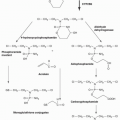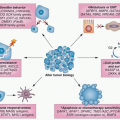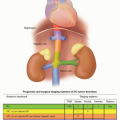cancers (where the estrogen, progesterone and Her2 receptors are all negative, often abbreviated ER-/PR-/Her2) are overrepresented in BRCA1 families,16,17 and the National Comprehensive Cancer Network (NCCN) BRCA testing guidelines now include individuals diagnosed with a triple negative breast cancer <age 60 years.18 However, breast cancer patients without these pathologic findings are not necessarily at lower risk to carry a mutation. In contrast, patients with a borderline or mucinous ovarian carcinoma are at lower risk to carry a BRCA1 or BRCA2 mutation19 and may instead carry a mutation in a different gene. It is already well-established that medullary thyroid carcinoma, sebaceous adenoma or carcinoma, adrenocortical carcinoma before the age of 25 years, and multiple adenomatous, hamartomatous, or juvenile colon polyps are indicative of other rare hereditary cancer syndromes.11,20 These risk factors should be viewed in the context of the entire family history, and must be weighed in proportion to the number of individuals who have not developed cancer. The risk assessment is often limited in families that are small or have few female relatives; in such families, a single risk factor may carry more weight.
TABLE 35.1 How to Find a Genetic Counselor for Your Patient | ||||||||||||||||
|---|---|---|---|---|---|---|---|---|---|---|---|---|---|---|---|---|
| ||||||||||||||||
TABLE 35.2 Risk Factors that Warrant Genetic Counseling for Hereditary Cancer Syndromes | |
|---|---|
|
the cancer status of common children, but may also determine if children are at increased risk for a serious recessive genetic disease such as Fanconi anemia.26 Children who inherit two copies of a BRCA2 mutation (one from each parent) are now known to have this serious disorder characterized by defective DNA repair and high rates of birth defects, aplastic anemia, leukemia, and solid tumors.26 Patients should be encouraged to report changes in their family history over time (e.g., new cancer diagnoses, genetic testing results in relatives), because this may change their risk assessment and counseling.
What is the chance that the counselee will develop the cancer observed in his/her family (or a genetically related cancer such as ovarian cancer due to a family history of breast cancer)?
What is the chance that the cancers in this family are caused by a single gene mutation?
What is the chance that we can identify the gene mutation in this family with our current knowledge and laboratory techniques?
or by referral, by a qualified genetics professional.”4 In an effort to reduce errors, some insurance companies are requiring genetic counseling by a certified genetic counselor before testing for hereditary breast or colon cancer syndromes.12
Deleterious mutation “positive.” When a deleterious mutation in a well-known cancer gene is discovered, the cancer risks for the patient and her family are relatively straightforward. However, with the development of multigene panels and the inclusion of many lesser known genes, the risks of detecting a mutation within a gene whose cancer risks are ill defined and medical management options unknown is much greater. Even for well-known genes, the risks are not precise and should be presented to patients as a risk range.41,42 When a true mutation is found, it is critical to test both parents (whenever possible) to determine from which side of the family the mutation is originating, even when the answer appears obvious.
True negative. An individual does not carry the deleterious mutation found in her family, which ideally, has been proven to segregate with the cancer family history. In this case, the patient’s cancer risks are usually reduced to the population risks.
Negative. A mutation was not detected, and the cancers in the family are not likely to be hereditary based on the personal and family history assessment. For example, a patient is diagnosed with breast cancer at age 38 years and comes from a large family with no other cancer diagnoses and relatives who died at old ages of other causes.
Stay updated, free articles. Join our Telegram channel

Full access? Get Clinical Tree






